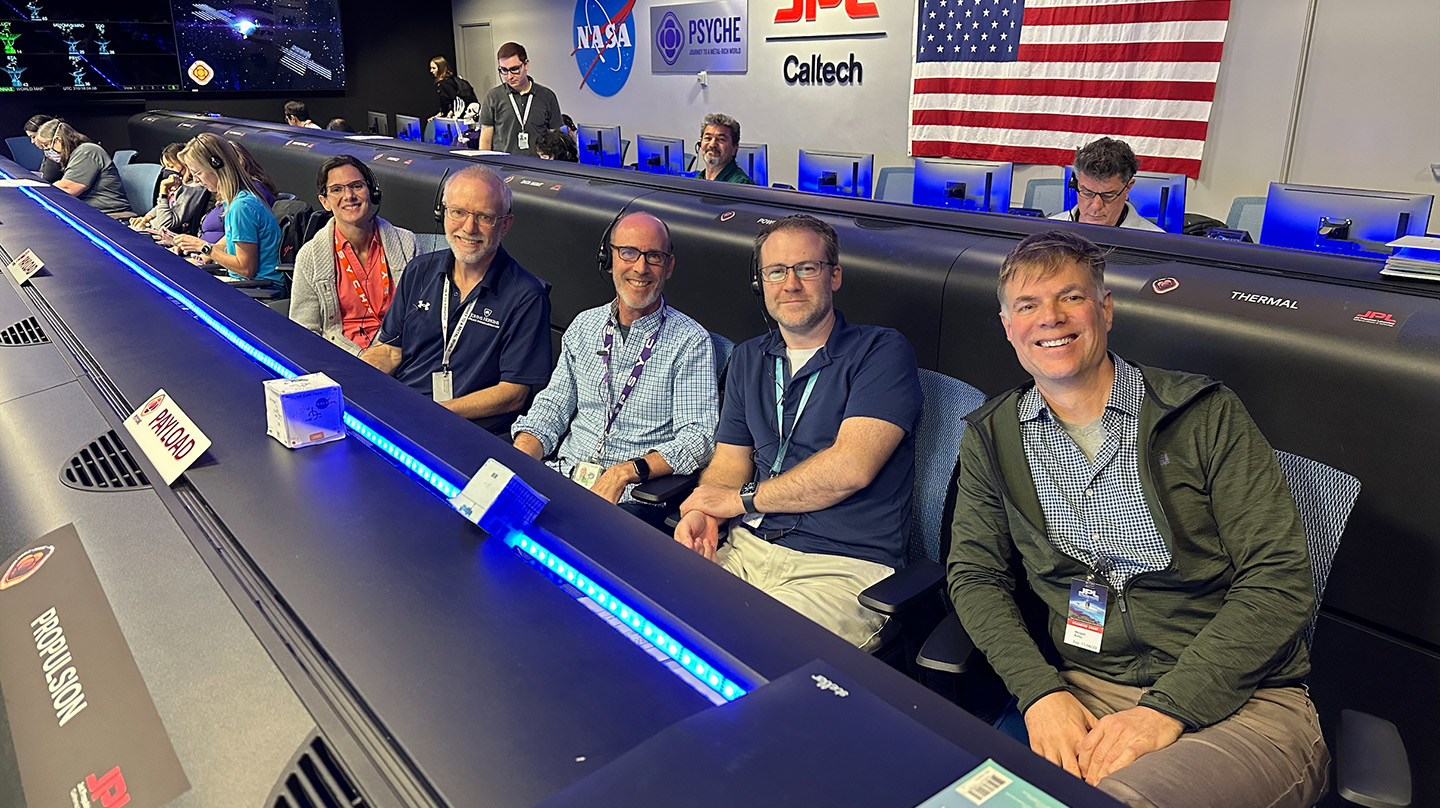News
Psyche Gamma-Ray Instrument Hums to Life, Marking Next Generation for Space Exploration
Set 6.5 feet (2 meters) away from NASA’s Psyche spacecraft on the tip of a boom, the mission’s gamma-ray spectrometer (GRS) hummed to life on Nov. 6 for the first time since launch in mid-October. The GRS is one half of the Gamma-Ray and Neutron Spectrometer (GRNS) instrument on the Psyche mission. A subset of the GRS instrument team, consisting of John Goldsten, Patrick Peplowski, Morgan Burks and David Lawrence, watched in awe at NASA’s Jet Propulsion Laboratory (JPL) mission operations center in California as “beautiful data” poured down every five seconds from the spacecraft.
The data was collected as part of a highly orchestrated set of activities that have been carefully planned and rehearsed over the past three years. “Our commissioning activities succeeded beyond our expectations, and this success lays the groundwork for future operations during cruise and at asteroid Psyche,” said Peplowski, the Psyche GRNS instrument scientist from the Johns Hopkins Applied Physics Laboratory (APL) in Laurel, Maryland. Peplowski led the development of the GRS commissioning activities, in close collaboration with the Psyche science operations team at JPL.
To the untrained eye, the collection of squiggly lines means virtually nothing, but to the multi-institutional team of physicists who spent nine years developing the instrument, those lines are a herald of exciting things to come — for both Psyche and future NASA missions.
“[The data] are showing us that we have a really high-performance instrument, and will allow us to refine calculations about how sensitive we’ll be when we get to Psyche,” said Lawrence, the Psyche GRS investigation lead, from APL.



